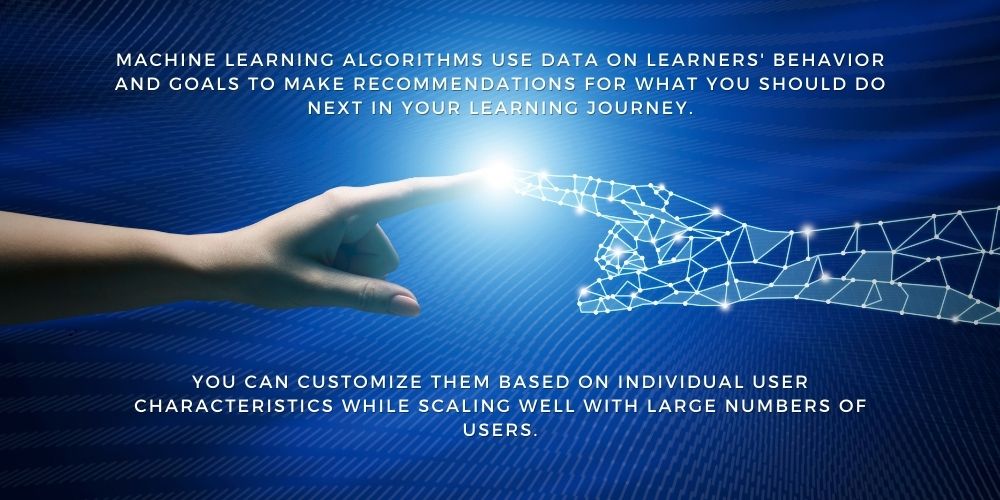11 LMS Trends That Will Impact Your Training Programs in 2025
Want to know about LMS trends in 2025? If yes, then this article is for you.
Almost every industry has evolved over the years.
The same trend is being witnessed in the eLearning and LMS sector, with new technologies and methods of delivery leading to better learning outcomes for organizations.
This blog will look at 11 LMS trends and how they will change how we deliver eLearning in 2025.
But before that, let’s look at LMS market stats.
LMS Trends And Learning Statistics
- The LMS market is expected to grow from $9.2 billion in 2018 to $22.4 billion in 2023 at a CAGR of 19.6%.
- By 2023, Latin America’s eLearning market is expected to generate $3 billion in revenue.
Save Thousands Of Dollars With Coggno Prime Subscription
List of LMS Trends in 2025
Trend 1 – The Growth Of AI-powered Learning Management Systems
AI and Machine Learning are the first of many LMS trends to watch in 2025.
They are the future of eLearning and will be a significant part of the future of LMSs.
In the coming years, AI will be so prevalent in LMSs that it’ll become something you don’t even notice anymore.
You know how some people say, “I want to die in my sleep?”
Well, we want our learning management system (LMS) to die in our sleep, too—but only if it means that AI has taken over without us noticing!
Must Read – What Is A LMS? Everything You Need To Know
Trend 2 – Upsurge In Cloud-Based LMS Solutions
The cloud-based learning management system is the most popular option for companies looking to upgrade their training and development programs.
It allows organizations access to a wide range of features without incurring any upfront costs.
Furthermore, it is more cost-effective since updates can be done on demand.
In addition, cloud-based software is easier to maintain and more secure.
It uses a centralized storage system:
- With controlled access;
- That accommodates future growth;
- Flexible;
- Efficient option for businesses
that need an LMS that suits their specific needs.
Must Read – What Does LMS Mean: Uses, Benefits, and Types of LMS
Trend 3 – The Retail Industry Emerges As A User Of LMS
As the retail industry develops a digital strategy, a learning management system is becoming a critical component of that strategy.
Retailers are discovering that customers expect more from their shopping experience than just buying an easy way.
Furthermore, they want a positive and engaging eCommerce environment where they can:
- Explore merchandise;
- Learn about products and services;
- Interact with other shoppers online
In addition to providing business sales opportunities through eCommerce platforms, retailers can also build brand loyalty by creating engaging LMS software for consumers.
Enroll – Social Media For Managers
Trend 4 – The Development Of Virtual And Augmented Reality In eLearning
In one of the e-learning trends in 2025, you will likely encounter two immersive terminologies: virtual reality (VR) and augmented reality (AR).
While these technologies are similar in some ways, they differ in how they can provide an educational experience.
VR allows learners to immerse themselves in a digital environment where they can interact with objects and people using headsets or controllers.
In addition, AR overlays 3D graphics onto physical objects in the real world.
For example, a user could stand on a street corner while wearing an AR device such as Google Glass and see digital information about nearby buildings or businesses superimposed on those locations.
Must Read – What To Look For In A Learning Management System?
Trend 5 – Rise Of Social Learning Management Systems
Social management systems are web-based platforms.
They allow multiple users to collaborate and share knowledge in a virtual community.
It uses online tools to facilitate collaboration and knowledge sharing among learners.
Furthermore, the platform design supports communities of learners.
And you can use it in the following ways in 2025:
- Corporate training programs;
- Education; or
- Informal learning
Trend 6 – Growing Personalization Of The eLearning Experience
Personalization is about tailoring eLearning content to the learner.
You can use personalization through a variety of methods, including:
Artificial intelligence And Machine Learning
Machine learning algorithms use data on learners’ behavior and goals to make recommendations for what you should do next in your learning journey.
Furthermore, AI-powered recommendations are often based on previous actions taken by other learners.
Therefore, you can customize them based on individual user characteristics while scaling well with large numbers of users.
Must Read – Top 6 Learning And Development Trends
Recommendation Engines
A recommendation engine uses data about past learner behavior to suggest relevant content.
It will help you achieve your objectives or perform better in an activity or assessment.
This way, you can get personalized suggestions from a learning management system or other tool based on how well you’ve completed specific tasks.
Furthermore, it is beneficial if there are multiple ways a student could complete those tasks.
Trend 7 – Increasing Use Of Microlearning Solutions In Corporate Employee Training Programs
Microlearning is a subset of eLearning that offers bite-sized learning content.
It is also known as nugget training, micro-courses, or micro-modules.
It can teach specific learning objectives more engagingly than traditional methods.
Further, microlearning is often more effective than traditional eLearning.
It’s easier for learners to digest and retain information presented in small chunks rather than simultaneously processing large amounts of information.
Furthermore, the petite time frame allows you to focus on specific skills that your employees need instead of cramming them into a lengthy course or module.
You can also test out various teaching approaches while using microlearning.
It will give you valuable feedback to ensure your program meets its goals by offering employees relevant content without wasting their time with irrelevant details or outdated information.
Must Read – 8 Steps For Making Employee Training Fun And Effective
Trend 8 – An Increase In Gamification Practices For Online Courses
Gamification uses game elements to encourage employee retention and engagement in a non-game context.
Adding gamification practices to online learning and courses can increase learner engagement and understanding.
Furthermore, you can implement gamification in eLearning through badges and leaderboards.
Badges let students share their accomplishments with others.
And leaderboards inspire competition by showing how students compare.
Gamification also allows teachers to reward positive behavior.
For example, if students respond well during a discussion round or share an idea that leads to new insights, they could be rewarded with points or badges for their participation.
Trend 9 – Organization Opting For Mobile Learning Apps Over Desktop Training Solutions
Mobile devices are the most popular way to access the internet, and this trend is growing exponentially.
According to a survey by Pew Research Center, 85% of the U.S. population owns a smartphone—up from 35% in 2011.
And the number continues to increase as more people adopt smartphones and tablets as their primary computing devices.
Mobile eLearning apps are an excellent way to deliver content on these devices.
They’re further optimized for screens with limited real estate (which means more pixels and smaller text sizes).
In addition, many learning apps incorporate gamification elements into their design, making them more interactive, engaging, and fun for learners.
And it is better than purely static web pages on small screens with poor resolution.
Trend 10 – The Emergence Of Text Recognition Technology For Learning Analytics
Learning analytics, the measurement and analysis of learning outcomes, is one of the most important aspects of modern education.
As such, many companies are investing in new technologies that can help them collect more data and make better decisions about their programs.
One such technology that could help with this process is text recognition.
Text recognition technology uses AI to extract text from images, videos, or audio files for learning purposes or data visualization.
For example, you want to analyze a picture taken during an online course session and determine how students felt at any given moment during the presentation.
In that case, this would require some text recognition tool before any analysis could be completed.
Trend 11 – A Sharp Increase In AI Solutions For eLearning Analytics And Data Visualization
Another trend we expect to see in the LMS industry over the next few years – is a sharp increase in AI solutions for data analytics and visualization.
AI will be used to:
- Automate processes;
- Improve the quality of learning; and
- Reduce costs0/
In addition, you can use this to analyze learner behavior and provide insights into how learners interact with courses.
This information can then improve individualized and blended learning experiences across various platforms.
Conclusion
It’s essential to keep in mind that these trends are not set in stone.
They can change over time and may not be relevant to every organization’s needs.
However, we believe they will continue as eLearning technology evolves over the next few years.
Find more useful LMS blogs on Coggno.






















